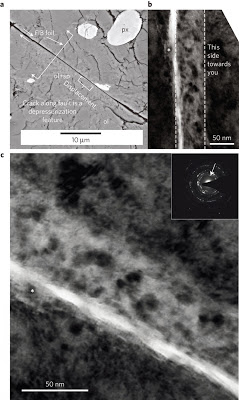
A University of Oklahoma structural geologist and collaborators are studying earthquake instability and the mechanisms associated with fault weakening during slip. The mechanism of this weakening is central to understanding earthquake sliding.
Ze’ev Reches, professor in the OU School of Geology and Geophysics, is using electron microscopy to examine velocity and temperature in two key observations: (1) a high-speed friction experiment on carbonate at conditions of shallow earthquakes, and (2) a high-pressure/high-temperature faulting experiment at conditions of very deep earthquakes.
Reches and his collaborators have shown phase transformation and the formation of nano-size (millionth of a millimeter) grains are associated with profound weakening and that fluid is not necessary for such weakening. If this mechanism operates in major earthquakes, it resolves two major conflicts between laboratory results and natural faulting–lack of a thermal zone around major faults and the rarity of glassy rocks along faults.
Image Caption (Fig3):
a, Backscatter SEM image of polished section shows the sense of shear, displacement and location of FIB-cut foil. White, MgGeO3 pyroxene (px); mottled regions, (ol+sp) partially transformed before faulting. b, TEM image of FIB cross-section. Fault zone (dashed lines) ~70 nm thick, grain size ≤15 nm. Wall rock both sides of the fault (black) is single large, deformed olivine crystal oriented for strong diffraction. c, Detail of b tilted to a slightly different orientation, showing fault boundaries. Diffraction pattern (inset) shows olivine from the fault wall (arrow) and rings of spinel. Asterisks in b,c identify the same location.
Reference:
Reches co-authored the study with H.W. Green II, University of California, Riverside; F. Shi, China University of Geosciences; K. Bozhilov, University of California, Riverside; and G. Xia, University of Queensland. A paper on this study, “Phase transformation and nanometric flow cause extreme weakening during fault slip,”. DOI: 10.1038/ngeo2436
Note : The above story is based on materials provided by University of Oklahoma.










